What is Peace?
Peace — a freedom from disturbance and feeling of quiet and tranquility — is a very elusive place for so many people to inhabit, including me.
Based on my observations and experiences with thousands of people and dealing with my own life, all of us can get on a bit of a treadmill where we have a very, very hard time connecting to our center and distinguishing what’s actually meaningful in our lives versus what is programmed activity.
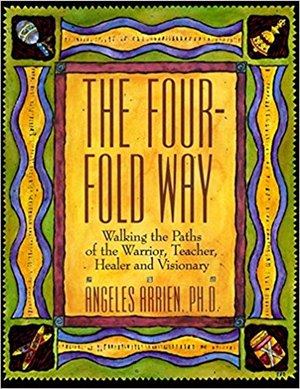 All of this goes back to the four main causes of addiction identified by Angeles Arrien, an anthropologist and Shaman who wrote a beautiful book called The Four-Fold Way.
All of this goes back to the four main causes of addiction identified by Angeles Arrien, an anthropologist and Shaman who wrote a beautiful book called The Four-Fold Way.
She explained how addictions had four root causes and are rampant in our modern society. (Watch her Tedx Talk on the Cornerstones of Wisdom to learn more about the Four-Fold Way.)
Focusing on what is wrong: Often, this is tied to fundamental religious programming and trying to be perfect and sinless or to our education systems where we’re constantly trying to earn a certain grade to achieve a certain level of acceptance or approval and to feel good about ourselves fitting in.
Too much intensity: So many of us are raised in families full of conflict where there’s a lot of yelling, shouting, physical, emotional, mental or sexual abuse and doing a lot of shaming (do this or God’s going to send you to hell).
Perfectionism: These attitudes also come from a lot of fundamentalist religious upbringings because parents are always trying to make sure everybody’s conforming to religious ideals, looking or dressing a certain way or listening to select music. These show up in how parents push their kids to excel in school too. The problem with perfectionism: It’s always based on someone else’s approval. You may think you’re doing your job perfectly, until the moment someone criticizes you.
The need to know: This constant need for accomplishment — achieving a certain level of academic success or living the American dream — fuels an unending need to know.
After battling all of these addictions and distractions, peace becomes a word and an illusion at that.
Do this exercise!
I can’t imagine any of you reading this or watching my vlog wouldn’t want to have more peace in your lives. This week, I’ll guide you through an exercise to help you identify what brings more peace into your life by looking at this from four distinct perspectives.
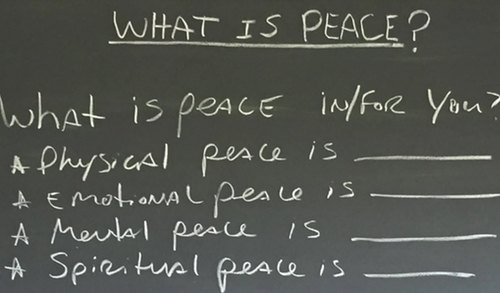
Once you recognize what peace means to you, this exercise identifies what you’re going to do to create more peace for yourself physically, emotionally, mentally and spiritually (P~E~M~S).
Any one of these is a step in the right direction because anytime we create more peace inside ourselves, that’s exactly what we’re sharing with the world. All of us connected in this way.
If you haven’t read One Mind by Larry Dossey, it’s an excellent book that helps people realize there’s ample scientific evidence that we are highly connected. It also reminds us lower levels of consciousness that are only concerned about themselves or their group or their own nation are really participating in an illusion.
Whenever you’re doing something that is not concurrent with the laws of the universe, according to Arnold Patent, you must provide the energy yourself.
In other words, if you’re living in ways that are disrespectful and destructive to other people because you’re unconscious, it’s going to produce pain for you and, eventually, for others too.
The key point here is that if it’s not congruent with how the universe works, you have to provide the energy to do that yourself. In my experience, that leads to a lot of burnout because people feel isolated from the rest of the world.
Ways you can find peace
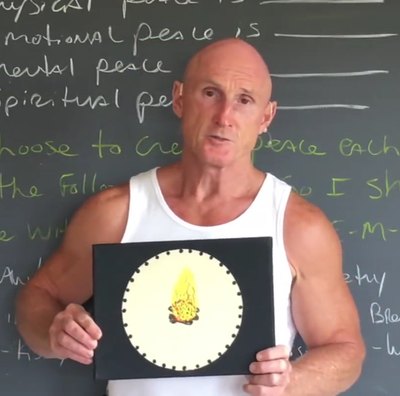
The good news here is that you can find peace by doing a variety of things, including some I’ve listed below.
- Making art and drawing
- Journaling
- Poetry
- Dancing
- Singing
- Bathing in nature
- Meditation
- Telling stories
- Listening
- Breathwork
- Exercise
- Hugs and kisses
- Gardening
- Worship
- Learning a new skill
I talk about all of these in greater detail on my vlog, but I want to share making art because I do this a lot with my clients.
As many of you know, I’m a Native American Medicine Man and spirit guide and do healing journeys with people and sometimes group healing. I created this painting you see here for one such group several months ago where I hosted five people to do some deep healing work.
I guided them through a process of using art to illustrate the state of their lives they were willing to create inside of themselves. While I was working with this group, I connected to my soul and asked for the image I should share with them as their leader to experience, which is where this image of a campfire came from.
I don’t know how many of you’ve ever been out camping and have had the joy of sitting around a campfire at night. It’s extremely beautiful, calming, relaxing and a great example of taking an affirmative action to create peace within yourself and sharing it with somebody else.
Resources
If you need help to achieve inner peace in your life, here’s some resources that may help you find your way.
In P~P~S (Personal Professional Spiritual) Success Mastery Lesson 1, you’ll learn how to find and live your dream by taking a mandola exercise to identify the polarities in your life. Then, you’ll examine the 10 components of a dream so you can identify what would really make you happy to live that way, then compare it to the way you live now.
My Last 4 Doctors You’ll Ever Need ebook helps you to identify what your dream is, recognize where you’re out of balance and pinpoint your core values and code of conduct so that you can create inner and outer environments that nourish you.
For those of you who want to go a lot deeper, the first part of our CHEK 4 Quadrant Coaching Mastery program is up (we’re working on the remaining sections right now). It takes you deep into assessing the key archetypes that work through our psyche that hold onto a lot of our programming
A book I recommend a lot, Nonviolent Communication: The Basics As I Know and Use Them by Wayland Myers, is a small but very powerful one. The gist of it is dealing with what is it that you want, feel or need, and finding out where the other person’s wants feelings and needs are. When we deal with wants, feelings and needs, we find that it’s much easier to create peace within ourselves and in our relationships.
You’ll never have peace until you identify what it is and then distinguish what you’re willing to do to create it for yourself.
Know that every ounce of peace you generate within yourself is peace you’ve added to the world. And, you can go to bed each night knowing you’ve made the world a little bit more beautiful.
Love and chi,
Paul


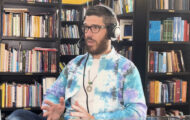
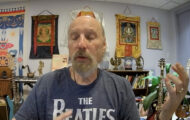










Find me on the web